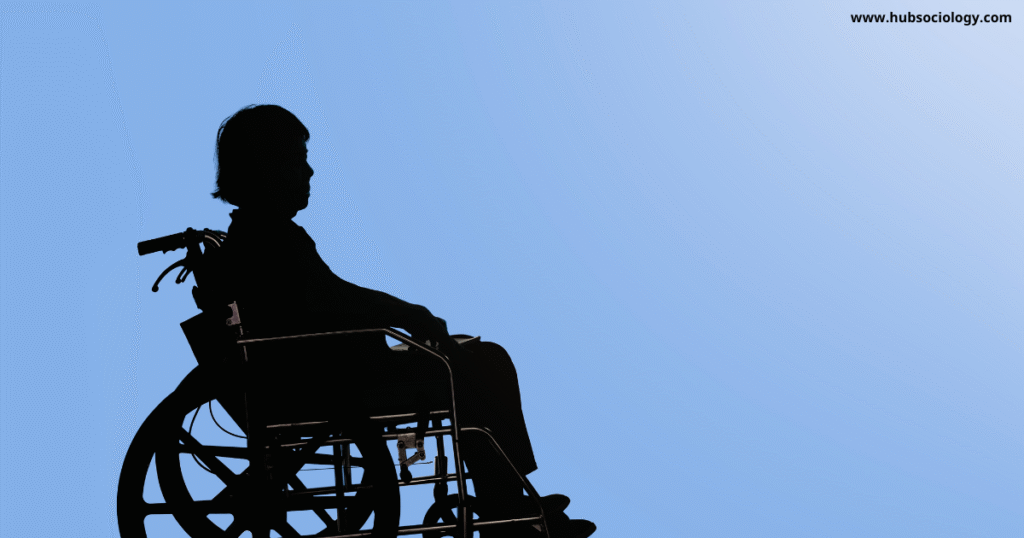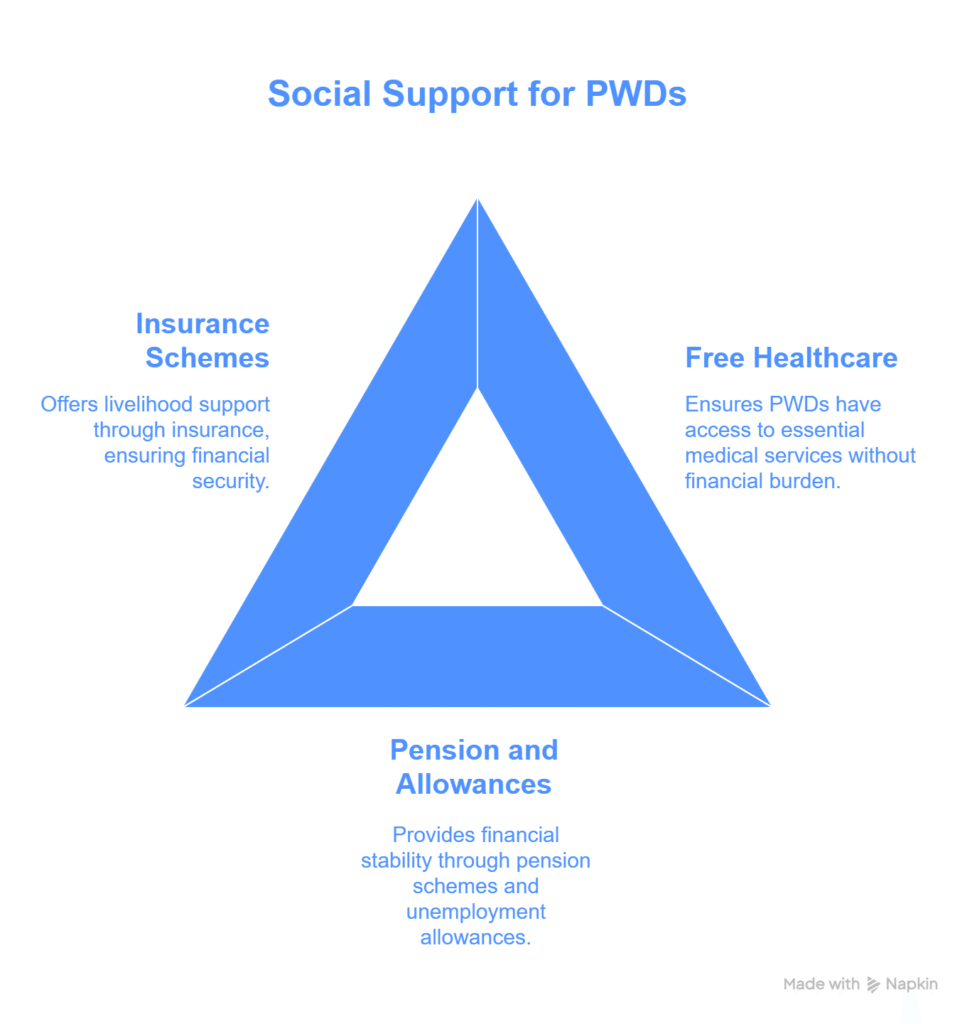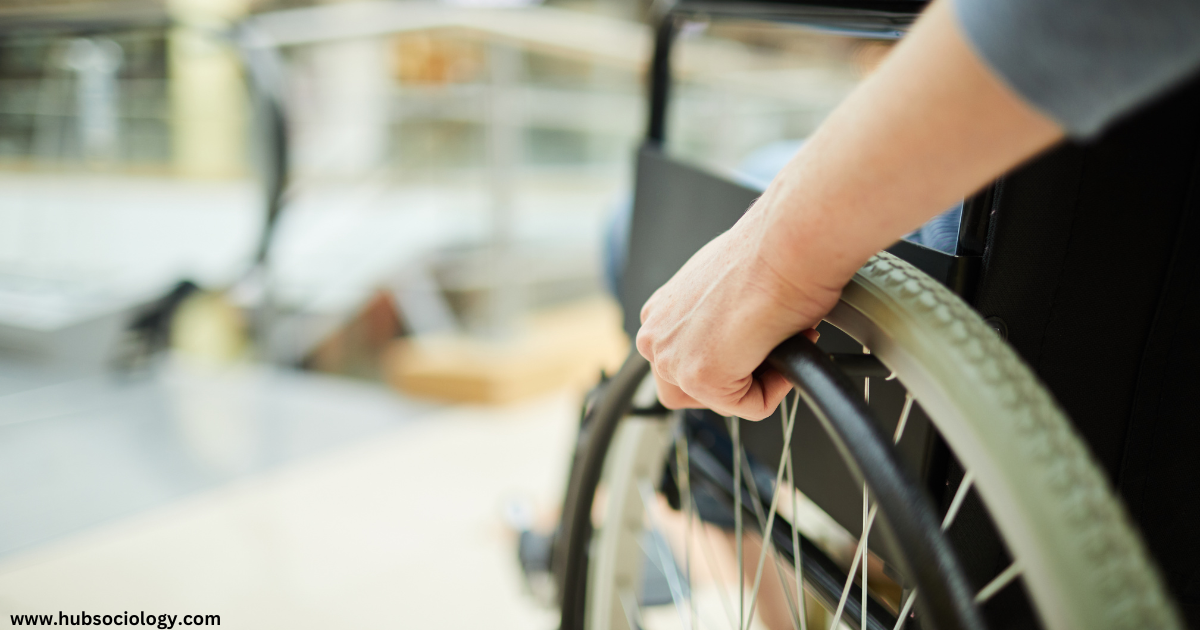Introduction
The Rights of Persons with Disabilities (RPWD) Act, 2016 is a landmark legislation in India that replaced the earlier Persons with Disabilities (Equal Opportunities, Protection of Rights and Full Participation) Act, 1995. Enacted in line with the United Nations Convention on the Rights of Persons with Disabilities (UNCRPD), the 2016 Act expands the definition of disability, recognizes new categories, and strengthens provisions for inclusivity, accessibility, and non-discrimination.

From a sociological perspective, the Rights of Persons with Disabilities (RPWD) Act, 2016 is significant as it reflects changing societal attitudes towards disability, moving from a medical and charity model to a rights-based approach. This article examines the Act’s provisions, its implications for social inclusion, and the challenges in its implementation.
Understanding Disability: From Stigma to Rights
1. The Medical vs. Social Model of Disability
Traditionally, disability was viewed through a medical model, which considered it an individual impairment requiring treatment or rehabilitation. This perspective often led to marginalization, as persons with disabilities (PWDs) were seen as objects of pity rather than active participants in society.
The social model of disability, on the other hand, argues that disability is a result of social barriers—physical, attitudinal, and institutional—rather than just an individual’s condition. The Rights of Persons with Disabilities (RPWD) Act, 2016 aligns with this model by emphasizing accessibility, equality, and participation rather than mere welfare measures.
2. Changing Societal Perceptions
Indian society has historically associated disability with karma, superstition, or divine punishment, leading to exclusion and discrimination. However, with globalization and advocacy movements, there has been a shift towards recognizing disability as a human rights issue. The Rights of Persons with Disabilities (RPWD) Act, 2016, reflects this shift by ensuring legal protections and promoting inclusivity.
Key Provisions of the RPWD Act, 2016: A Sociological Analysis
1. Expanded Definition of Disability
The Act recognizes 21 types of disabilities (up from 7 in the 1995 Act), including:
- Physical disabilities (e.g., locomotor, blindness, deafness)
- Intellectual and developmental disabilities (e.g., autism, specific learning disabilities)
- Mental health conditions (e.g., mental illness)
- New categories like acid attack victims and Parkinson’s disease
This expansion acknowledges the diverse experiences of disability, ensuring that more individuals receive legal protection.
2. Rights-Based Approach
The Act guarantees:
- Equality and non-discrimination (Section 3)
- Right to accessibility in public spaces, transport, and ICT (Section 40-46)
- Right to education (Section 16) – mandates inclusive education and reservations in schools/colleges
- Employment reservations increased from 3% to 4% in government jobs (Section 34)
- Legal capacity and guardianship (Section 13-14) – promotes supported decision-making instead of complete dependency
These provisions shift the focus from welfare to empowerment, enabling PWDs to participate fully in society.
3. Social Security and Health
The Act mandates:
- Free healthcare for PWDs (Section 25)
- Pension schemes and unemployment allowances (Section 24)
- Insurance schemes for livelihood support
These measures address structural inequalities that prevent PWDs from accessing basic services.

4. Awareness and Sensitization
- Campaigns to reduce stigma (Section 33)
- Training programs for employers, educators, and healthcare workers
This is crucial because attitudinal barriers remain one of the biggest challenges for PWDs in India.
Sociological Implications of the Act
1. Promoting Social Inclusion
The Act facilitates:
- Inclusive education – Reduces segregation and fosters interaction between disabled and non-disabled students.
- Employment opportunities – Economic independence reduces dependency and enhances social status.
- Accessible infrastructure – Ensures mobility and participation in public life.
2. Challenging Stereotypes and Stigma
By legally recognizing PWDs as rights-bearing citizens, the Act challenges deep-rooted stereotypes. However, cultural attitudes take time to change. Many still view disability through a charity lens, undermining the Act’s objectives.
3. Intersectionality and Marginalized Groups
Disability intersects with caste, class, and gender, exacerbating exclusion. For instance:
- Disabled women face higher risks of abuse and lower employment rates.
- Rural PWDs struggle with accessibility due to poor infrastructure.
- Lower-caste PWDs experience compounded discrimination.
The Act attempts to address these disparities but requires targeted interventions.
Challenges in Implementation
1. Lack of Awareness
Many PWDs, especially in rural areas, are unaware of their rights under the Act.
2. Poor Enforcement
- Accessibility norms are often ignored in public buildings and transport.
- Employment quotas remain underfilled due to bureaucratic delays.
3. Attitudinal Barriers
- Employers hesitate to hire PWDs due to misconceptions.
- Families sometimes hide disabled members due to shame.
4. Inadequate Budgetary Allocations
State governments often lack funds for accessible infrastructure, healthcare, and education.
Way Forward: Strengthening the Sociological Impact
- Grassroots Awareness Campaigns – NGOs and local governments should conduct workshops.
- Strict Monitoring Mechanisms – Regular audits to ensure compliance with accessibility norms.
- Sensitization Programs – Training for teachers, employers, and healthcare workers.
- Intersectional Policies – Special provisions for women, Dalits, and rural PWDs.
- Community-Based Rehabilitation (CBR) – Empowering PWDs through local support systems.
Conclusion
The Rights of Persons with Disabilities (RPWD) Act, 2016 is a progressive step towards inclusive development, aligning with the social model of disability. However, its success depends on effective implementation, societal attitude shifts, and intersectional approaches. From a sociological standpoint, the Act not only provides legal rights but also challenges deep-seated prejudices, paving the way for a more equitable and inclusive India.
By recognizing PWDs as active citizens rather than passive recipients of charity, the Act fosters a society where disability is not a barrier to dignity, opportunity, and participation.

Topic Related Questions
5-Mark Questions (Short Answer Type)
- List the key features of the Rights of Persons with Disabilities Act, 2016.
- How does the Rights of Persons with Disabilities (RPWD) Act, 2016 differ from the 1995 Act?
- What are the different types of disabilities recognized under the Rights of Persons with Disabilities (RPWD) Act, 2016?
- Explain the concept of “reasonable accommodation” under the Rights of Persons with Disabilities (RPWD) Act, 2016.
- What are the employment provisions for persons with disabilities under the Rights of Persons with Disabilities (RPWD) Act, 2016?
- How does the Rights of Persons with Disabilities (RPWD) Act, 2016 promote inclusive education?
- What is the significance of the social model of disability in the RPWD Act?
- Name the authorities responsible for implementing the Rights of Persons with Disabilities (RPWD) Act, 2016.
- What measures does the Act take to ensure accessibility for PwDs?
- How does the RPWD Act address the issue of discrimination against persons with disabilities?
10-Mark Questions (Detailed Answer Type)
- Discuss the sociological significance of the Rights of Persons with Disabilities Act, 2016.
- Analyze how the RPWD Act, 2016 shifts from a medical model to a rights-based approach.
- Explain the provisions related to education and employment under the RPWD Act, 2016.
- What are the challenges in the implementation of the RPWD Act, 2016? Suggest measures to overcome them.
- How does the RPWD Act ensure social security and healthcare for persons with disabilities?
- Critically examine the role of awareness campaigns in reducing stigma against PwDs as per the RPWD Act.
- Discuss the importance of accessibility norms under the RPWD Act, 2016.
- How does the Act address the intersectionality of disability with gender and caste?
- Evaluate the impact of the RPWD Act on the empowerment of persons with disabilities in India.
- Compare the RPWD Act, 2016 with the UN Convention on the Rights of Persons with Disabilities (UNCRPD).
15-Mark Questions (Essay-Type/Long Answer)
- “The RPWD Act, 2016 marks a paradigm shift from welfare to rights for persons with disabilities in India.” Critically analyze this statement.
- Discuss the sociological implications of the RPWD Act, 2016 in transforming societal attitudes towards disability.
- Examine the role of the RPWD Act, 2016 in promoting inclusive development in India. What are the barriers to its effective implementation?
- How does the RPWD Act, 2016 address the challenges faced by women and marginalized communities with disabilities?
- “The success of the RPWD Act, 2016 depends not just on legal provisions but on societal change.” Discuss with examples.
- Analyze the impact of the RPWD Act on education, employment, and accessibility for persons with disabilities.
- Discuss the strengths and limitations of the RPWD Act, 2016 in ensuring equality for persons with disabilities.
- How can India ensure better enforcement of the RPWD Act, 2016 at the grassroots level? Suggest policy measures.
- Evaluate the role of NGOs and civil society in the successful implementation of the RPWD Act, 2016.
- “Disability rights are human rights.” In light of this statement, assess the effectiveness of the RPWD Act, 2016 in protecting the rights of PwDs.
